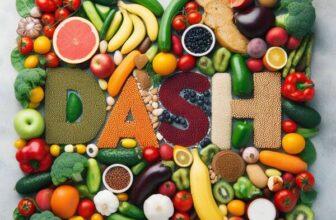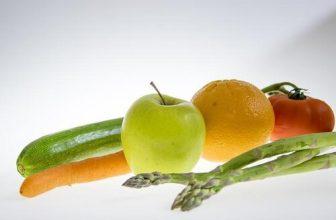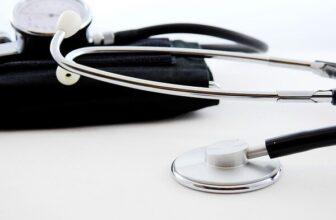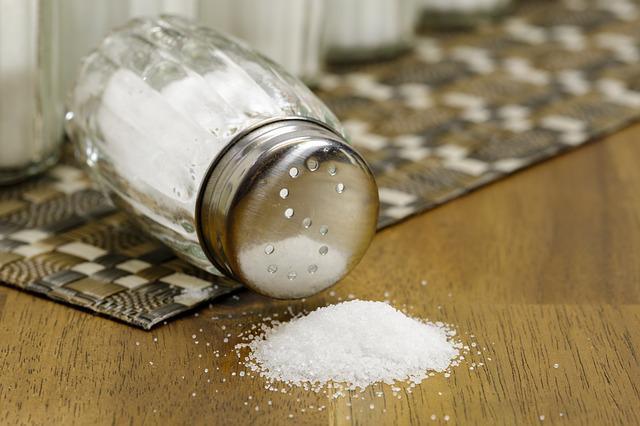
(Note: Some of the links in this post are affiliate links, and we will be compensated when you make a purchase by clicking through our links at no additional cost to you.)
Sodium
Sodium is an important mineral. It helps your body balance the level of fluids inside and outside the cells. To keep up this balance, your body needs very little sodium each day. Yet most of us eat 3,000 to 6,000 mg each day. Your physician may want you to limit your sodium. When you have high blood pressure, you often need to limit your sodium intake to less than 1,500 – 2,300 mg a day. So, ask your physician how much sodium is right for you.
The most common source of sodium is table salt. When most people think of salt, they think of shaking it on their food, or adding a pinch to cooking. It’s very important to try to get out of the habit of using salt in this way. But you also need to be careful about the salt you can’t see. Salt is also called sodium chloride, and it’s the sodium in salt that can be dangerous to your health.
Should You Avoid Sodium With High Blood Pressure?
Food that is high in salt (sodium) can make it harder for your kidneys to remove fluid, which then can cause your body to hold more fluid. Because this extra fluid must be pumped by the heart, the heart has to work even harder and increases your blood pressure. A good way to begin cutting down on your sodium is to stop salting your food. But you also need to be careful about the salt you can’t see.
Most of the sodium we eat has been added to food before we buy it. Canned, pre-packaged and fast foods often have sodium in them. Make sure you’re not eating too much of this “hidden” salt. Read the labels on the foods you buy to see how much sodium they contain.
Processed Food Is Often High In Sodium
75% of the salt that we eat comes from processed foods, such as breakfast cereals, soups, sauces, ready meals and biscuits. Almost everyone eats some types of processed food during a normal day. Even people who make all their own meals from scratch will usually buy foods such as bread and biscuits and these can be high in salt/sodium.
So, before you assume that you don’t eat too much salt, take a good look at what you’re buying, as well as how you use salt at home. Look for the word ‘sodium’ on the labels, it comes in many forms.
Foods That Are Usually High In Salt / Sodium
- Baked beans
- Biscuits – sweet and savory
- Breakfast cereals
- Cooking sauces
- Hot chocolate
- Pizza
- Ready meals
- Soups
- Canned spaghetti
- Canned vegetables and pulses (with added salt)
- Soy sauce
- Stock cubes
- Yeast extract
- Anchovies
- Bacon
- Cheese
- French Fries (if salt added)
- Chips
- Gravy granules
- Olives
- Pickles
- Pretzels
- Salted and dry roasted nuts
- Salted fish
- Sausages
- Smoked meat and fish
Bread, breakfast cereals, biscuits, cakes and meat products such as bacon, sausages and ham are some of the main sources of salt in people’s diet. (Breakfast cereals vary greatly in their salt/sodium content – so check the labels carefully.)
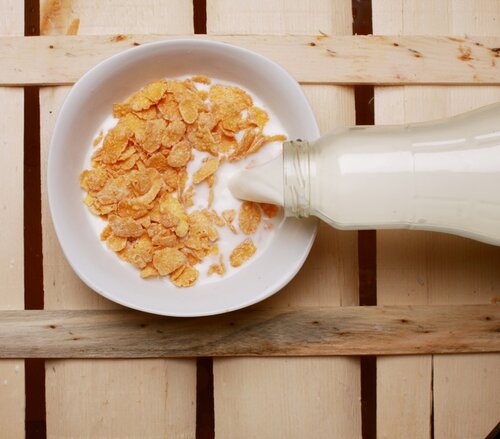
Some foods contain other forms of sodium, used as flavor enhancers and raising agents, such as ‘monosodium glutamate’ and ‘sodium bicarbonate’. You need to look out for sodium in ALL IT’S DIFFERENT TYPES.
If you know how much sodium is in a food, you can work out roughly the amount of salt it contains by multiplying the sodium by 2.5. So if a portion of food contains 1.2g sodium then it contains about 3g salt.
Checking food labels as you go round the Supermarket may be time consuming and boring, but once you’ve done it a few times it’ll become easier and quicker. The benefit of lowering your blood pressure is surely worth a few extra minutes while food shopping.
Use Herbs Instead Of Salt As Part Of A Low Sodium Diet
As part of a high blood pressure diet you should try to limit consumption of high-sodium processed foods and move to a low sodium foods based diet. Also, you should remove the salt shaker from the dinner table.
>>> Discover The Top DASH Diet Cookbooks To Help Lower Your Blood Pressure
Use other herbs and spices instead of salt. Don’t add salt to your cooking, experiment with fresh and dried herbs, such as onions, garlic, basil, oregano, parsley, thyme, rosemary, black and red pepper, and onion and garlic powders. These will all add flavor to your diet without adding sodium.
If you’re used to foods that are high in salt, or you normally add lots of salt to your food, you will probably miss it when you first cut down. Your taste buds do become used to high levels of salt. But your taste buds will soon get used to eating less salt and in a few weeks you’ll start to enjoy food with less salt. Salt can hide some more subtle flavors, so you might prefer different foods with less salt when your taste buds have had time to adjust.
Try eating only fresh or frozen vegetables as part of a high blood pressure / low sodium diet. Canned vegetables often have a much higher sodium content.
8 Tips For Lowering Salt and Sodium In Your Diet
Changing to a low sodium diet doesn’t have to mean your food will be bland. Here are some 8 tips for keeping your meals appetizing while protecting yourself:
- Buy fresh, plain frozen, or canned “with no salt added” vegetables.
- Use fresh poultry, fish, and lean meat, rather than canned or processed types.
- Use herbs, spices, and salt-free seasoning blends in cooking and at the table.
- Cook rice, pasta, and hot cereals without salt. Cut back on instant or flavored rice, pasta, and cereal mixes, which usually have added salt.
- Choose “convenience” foods that are lower in sodium. Cut back on frozen dinners, mixed dishes such as pizza, packaged mixes, canned soups or broths, and salad dressings–these often have a lot of sodium.
- Rinse canned foods, such as tuna, to remove some sodium.
- When available, buy low- or reduced-sodium, or no-salt-added versions of foods.
- Choose ready-to-eat breakfast cereals that are lower in sodium.
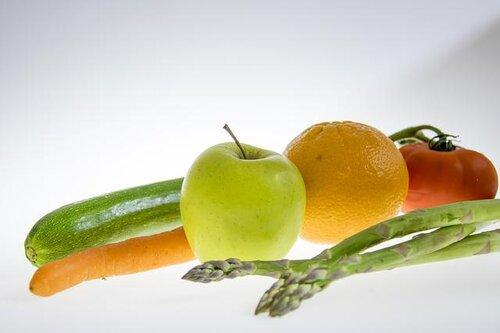
Low sodium foods to eat as part of a low sodium diet:
- Chicken and turkey (take off skin)
- Lean cuts of meat
- Fish: Fresh or frozen
- Skimmed or 1% milk, evaporated skim milk
- Cheese: lower or reduced in sodium
- Loaf breads, dinner rolls, English muffin, bagels, pita, and salt-free chips
- Cereals: some hot cereals and some ready-to-eat cold cereals lowest in sodium*
- Plain rice and noodles
- Fresh, frozen, or no salt added canned vegetables
- Fruits
- Soups: lower or reduced in sodium
- Margarine, vegetable oils
- Spices, herbs, and flavorings like oregano, garlic powder, onion powder, salt free seasoning blends, vinegar, and fruit juices
Choose to Eat Less Often:
- Hogmaws, ribs, and chitterlings
- Smoked or cured meats like bacon, bologna, hot dogs, ham, corned beef, luncheon meats, and sausage
- Canned fish like tuna, salmon, sardines, and mackerel
- Buttermilk
- Most cheese spreads and cheeses
- Salty chips, nuts, pretzels, or pork rinds
- Some cold (ready to eat) cereals highest in sodium, instant hot cereals
- Quick cooking rice and instant noodles, boxed mixes like rice, scalloped potatoes, macaroni and cheese, ++ and some frozen dinners, pot pies and pizza
- Regular canned vegetables
- Pickled foods like herring, pickles, relish, olives, or sauerkraut
- Regular canned soups, instant soups
- Butter, fatback, and salt pork
- Soy sauce, steak sauce, salad dressing, ketchup, barbecue sauce, garlic salt, onion salt, seasoned salts like lemon pepper, bouillon cubes, meat tenderizer, and monosodium glutamate (MSG)
>>> Discover The Best Kitchen Appliances That Make It Easy to Prep Healthy Meals
All information provided by HighBloodPressureHub.com is of a general nature and is furnished for educational purposes only. You should not rely on this information as a substitute for, nor does it replace, professional medical advice, diagnosis, or treatment. If you have any concerns or questions about your health, you should always consult with a physician or other health-care professional. Do not disregard, avoid or delay obtaining medical or health related advice from your health-care professional because of something you may have read on this site. YOU ARE ENCOURAGED TO CONFER WITH YOUR PHYSICIAN OR HEALTHCARE PROVIDER WITH REGARD TO INFORMATION CONTAINED ON OR THROUGH THIS WEB SITE. AFTER READING ARTICLES OR OTHER CONTENT FROM THIS WEB SITE, YOU ARE ENCOURAGED TO REVIEW THE INFORMATION CAREFULLY WITH YOUR PROFESSIONAL HEALTHCARE PROVIDER. The use of any information provided on this site is solely at your own risk.





